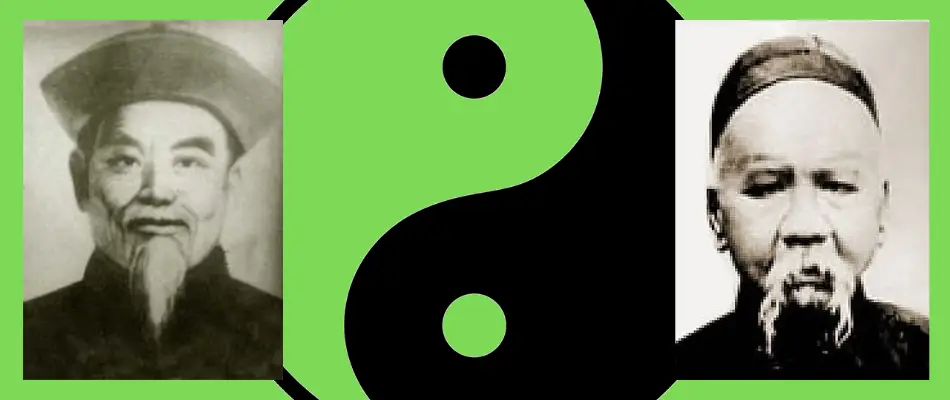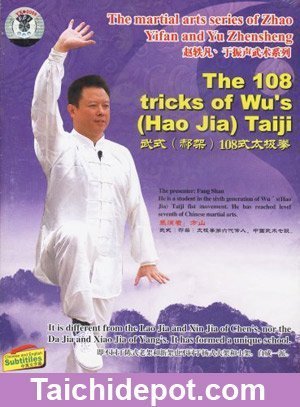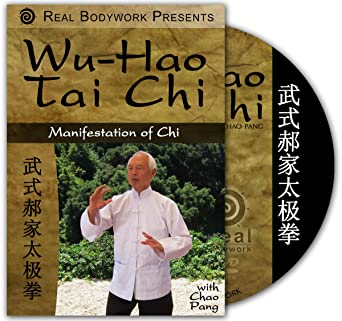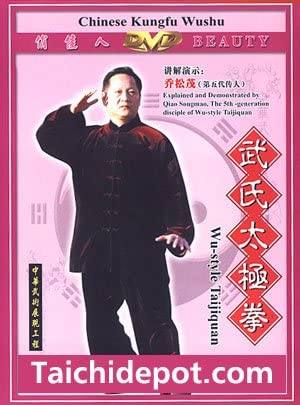Wu Hao style tai chi might be the smallest and least know of the five styles of tai chi, but it might also be one of the most important for all tai chi practitioners to know about. The founder and lineage holders had direct access to the original Chen style and Yang style grand masters and the original classics of internal martial arts. Through dedicated practice they raised their knowledge to a level of mastery to create their own system. From Wu Hao style we not only get their many contributions to tai chi but also an example of how to learn from all the arts to improve our own.
Wu Hao Style Tai Chi Chuan is the third oldest of the five styles of tai chi. It was founded by Wu Yuxiang who combined what he learned under Chen and Yang style masters with teachings from the Tai Chi Classics on internal martial arts. The style was expanded and shared worldwide by disciple Hao Weizhen and therefore now carries both names – Wu (Hao).
Let’s start with the history of its founders and how the style came to be. Then we will share a collection of videos of modern day practitioners doing the forms. There are also a small number of resources on Wu Hao at the end.
Before jumping in, know that Wu (Hao) style tai chi chuan is different than Wu style. We dedicated a different essay to Wu Style.
Wu Hao Style Tai Chi History
Wu Hao tai chi was founded by Wu Yuxiang in the mid 1800s. Coming from an educated mercantile family, he was accepted as a student of Yang tai chi founder Yang Luchan. He studied under Yang for 10 years and also studied under Chen style master Chen Qingping. Wu combined his knowledge and expertise from both arts with teachings on the internal martial arts to found his own style.

Wu Hao Style Tai Chi Chuan’s Contribution to the Tai Chi Classics
What was unique to Wu Yuxiang was that his family was affluent and connected, he was a scholar, as well as tai chi practitioner. This combination of intellect, connections, and abilities resulted in many of the original texts on tai chi being preserved and expanded upon.
One of the greatest contributes made by Wu Yuxiang to the art of tai chi was in applying internal martial arts theory to the form and expanding on the writings of the time to develop what we now know as the Tai Chi Chuan Classics. With the Wu family having political and economic connections, Wu’s brother was serving as a government official in Henan province when we received a copy of an internal arts manuscript attributed to a monk, Wang Zongyue. Wu shared the manuscript with his teacher Yang Luchan, began incorporating the teachings into his movements, and expanded on the classics writing several additions.
Wu Hao Tai Chi Lineage
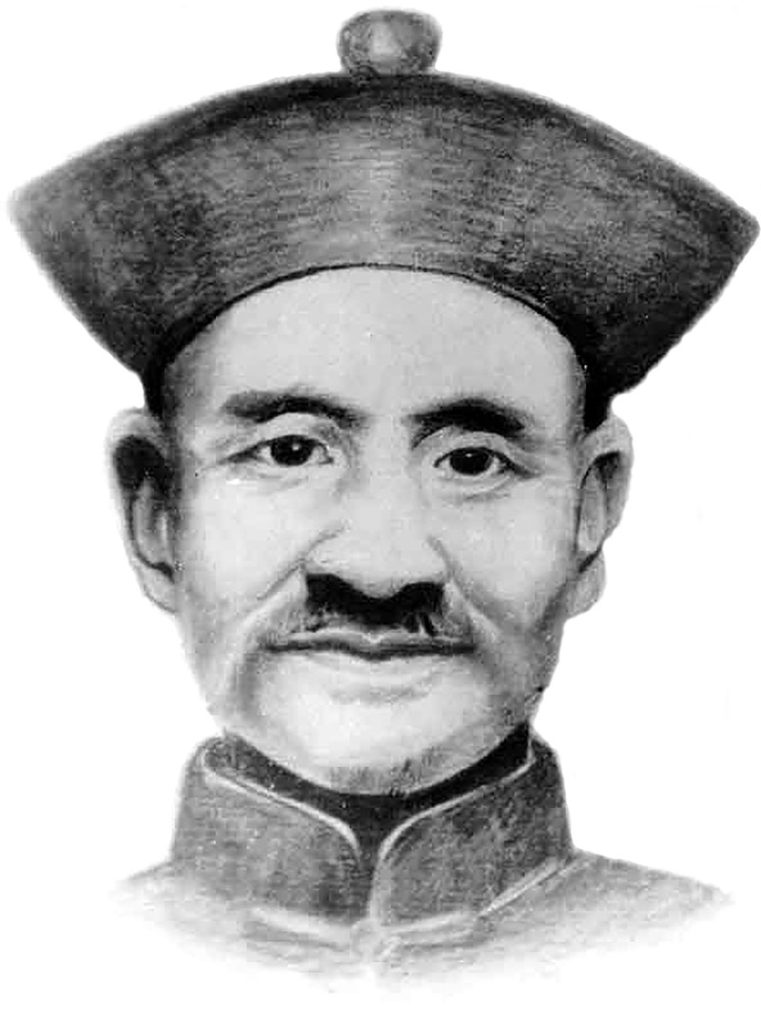
There are three prominent families responsible for the development and spread of Wu Hao tai chi; Wu, Li, and Hao. Wu Yuxiang taught and practiced with his immediate family. He engaged in debate over the classics and tai chi teachings with his nephew Li Yiyu who was a medical practitioner that ran a small pox clinic. Li contributed to the written documents that Wu Yuxiang was creating and also took on students.
Li Yiyu took on his neighbor Hao Weizhen as the first non-family member, trained him in the art, and shared the written classics. Hao Weizhen grew in prominence because of his level of skills and began teaching throughout the country. Most notably, Hao’s student Sun Lutang went on to found Sun style tai chi.
There was a time period during the 20th century when the Li family established a school in the north and members of the Hao family opened a school in Shanghai. To distinguish differences in their teaching, styles were described as the “Li branch” or “Hao branch.” They were also described as northern or southern Wu style. Generally, at this point they are collectively known as Wu (Hao) tai chi with the different family members given credit for their contributions to the art.
Wu Hao Style Tai Chi Movements
If I were to describe characteristically how Wu Hao style differs from the other families of tai chi I would say that the movements are very clean and purposeful. Wu Yuxiang spent 10 years studying under Yang masters and also studied Chen style so their influence can not be denied. However, Wu Hao postures are a lot smaller without the large circling of the arms in Yang or the long deep steps in Chen. You don’t see the hands extending out past the distance of the feet and the body rarely leans out into larger postures.
All the movements (and a huge focus of learning this style) are very slow and relaxed. In the video examples below you will see that there is a general sense of enjoyment and the masters do the form by taking their time with each move rather than trying to complete the form.
Lastly, and a great reason for practitioners of any style to watch the videos below, is that Wu Hao style movements have very clean weight shifts with legs either carrying the weight or being empty. All styles focus on this but to be honest, most practitioners never take time to clean up their weight shifts and Wu Hao is exemplary in this regard.
Wu Hao Style Tai Chi Forms
Stretching back through history we see an evolution of the form movements across generations as well as an increase and decrease in the number of movements. Overall, the forms that are currently practiced have much less jumping, kicking, and striking which was present in original form. Secondly, the forms initially had 50-55 movements but expanded to 96 moves by the end of the 1800s and a 108 movement form is now widely practiced.
At the same time, short form versions were created. They have done something unique for tai chi where they have broken the longer form into several smaller forms with different number of steps. The short forms are considered their first routines and serve as primers for learning the long form. There are several lengths including: 8 Step, 13 Step, 24 Step, 32 Step, and 36 Step.
The second routine or main routine is the long form which typically has 108 movements. Let’s take a look at some examples!
Wu Hao Tai Chi Short Form – 8 Moves
Wu Hao Style Tai Chi 46 Competition Form
In 1995, a Wu Hao style 46 movement form was developed for competition.
Wu Hao Style 96 Movement Long Form
Fourth generation master Hao Yueru developed a longer 96 movement form in the early 1900s to make this style more accessible to the public, older practitioners, and ill practitioners. The form removed hard strikes, jumps, and difficult moves like some of the kicks.
Wu Hao Style Long Forms – 108 Movements
One of the Wu Hao style long forms has the same number of movements as the Wu style and Yang style long forms. However, the movements are very unique. In this example (especially during cloud hands around 4 minutes) you can see the openness of the joints and blockiness of Chen style but also the balanced focus to both sides of the body of Yang.
Classic Video of Wu Hao Tai Chi Long Form
Take me back to the beginning! What I like about this older video on the Wu Hao long form is that you can compare it to newer videos and see how much of the original form and essence has been retained.
Wu Hao Tai Chi Weapons, Push hands, and Partner Practice
Wu Hao style tai chi forms are broken into open hand forms and weapons forms and are supported by push hands drills and partner routines. However, very few examples of the supporting drills exist and most schools primarily focus on the open hand forms. Wu Hao weapons examples are really rare. Through research I found that Wu Hao style has four weapons forms (straight sword, broad sword, spear, pole) although I have never seen an example of it except for the sword. Here is a nice example of the Wu Hao tai chi sword which shares a lot of similarities with Yang style sword.
Wu Hao Tai Chi Sword
Wu Hao Style Tai Chi Chuan Video and Book Resources
With the relatively small number of practitioners, the number of resources to read and watch are limited. The Wu Hao Tai Chi Foundation offers a couple books and videos as well as more information on this style. In addition, there are two Wu Hao Tai Chi DVDs that have been made available:
An Overview the Main Tai Chi Styles
This is part of a series of articles that we wrote on all the most popular styles of tai chi. Keep reading in that direction or find out how to improve your tai chi form.


